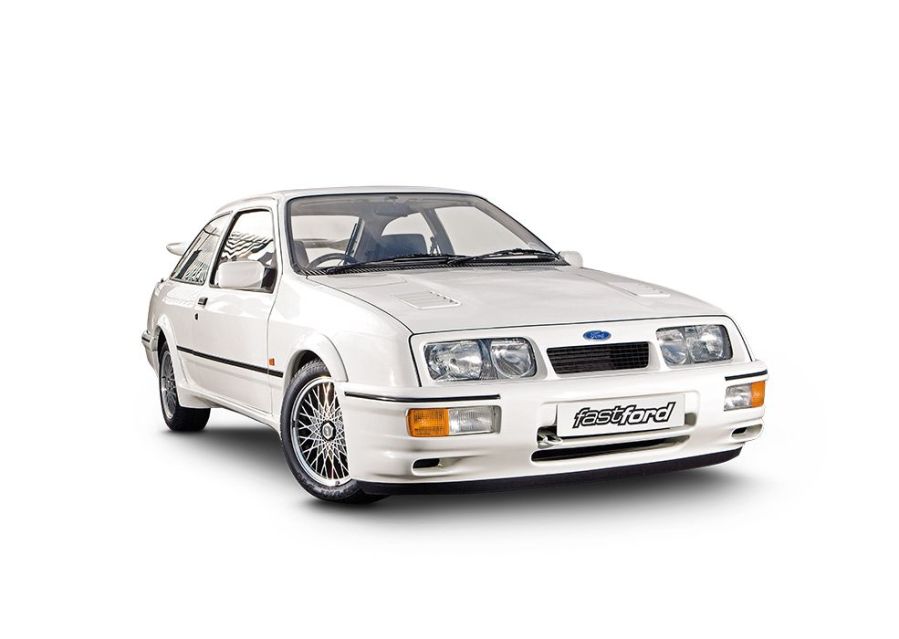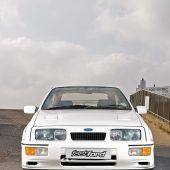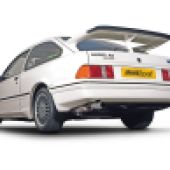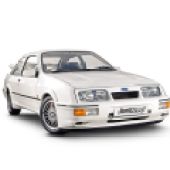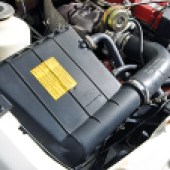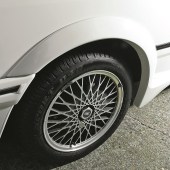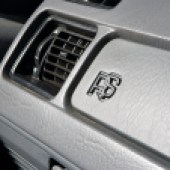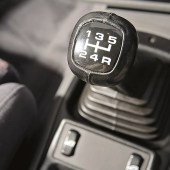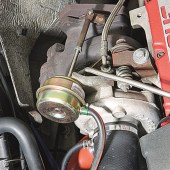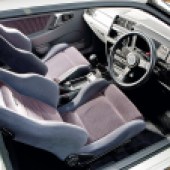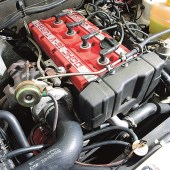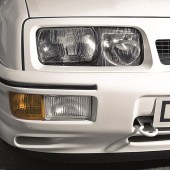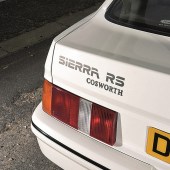The original Ford Sierra RS Cosworth three-door is ultra-cool, immensely tuneable and extremely desirable. Here’s how to buy a bank-beating investment that’s equally able to annihilate your wallet…
Guide from Fast Ford. Words: Dan Williamson
Why you want a Ford Sierra RS Cosworth three-door…
- Blimey. Who doesn’t want a three-door Ford Sierra RS Cosworth? It’s the most iconic car of a generation, and even the name sends shivers down the spine of any true petrolhead.
- Although prices have rocketed in recent times, Sierra Cosworth values will remain firm for many years to come. So why not enjoy your investment – even if that means parking it in your living room and staring at it.
- It’s a work of art you can drive to the shops. It might be a homologation special, but it’s still a five-seater hatchback with a big boot.
Why you don’t want a Sierra Cosworth…
■ Cossies are no longer supercars for the working man. Today you need a mortgage to buy a three-door and balls the size of melons to drive one as it’s intended.
■ So-called Cosworth Tax is real: parts prices are no joke, with massive bills for replacing genuine Ford trim or fixing an inevitably smoky or rattly YB. And it will break down…
■ Big money chases factory-original Cossies, so many masquerading as unmodified cars led previous lives as 500bhp hooligans.
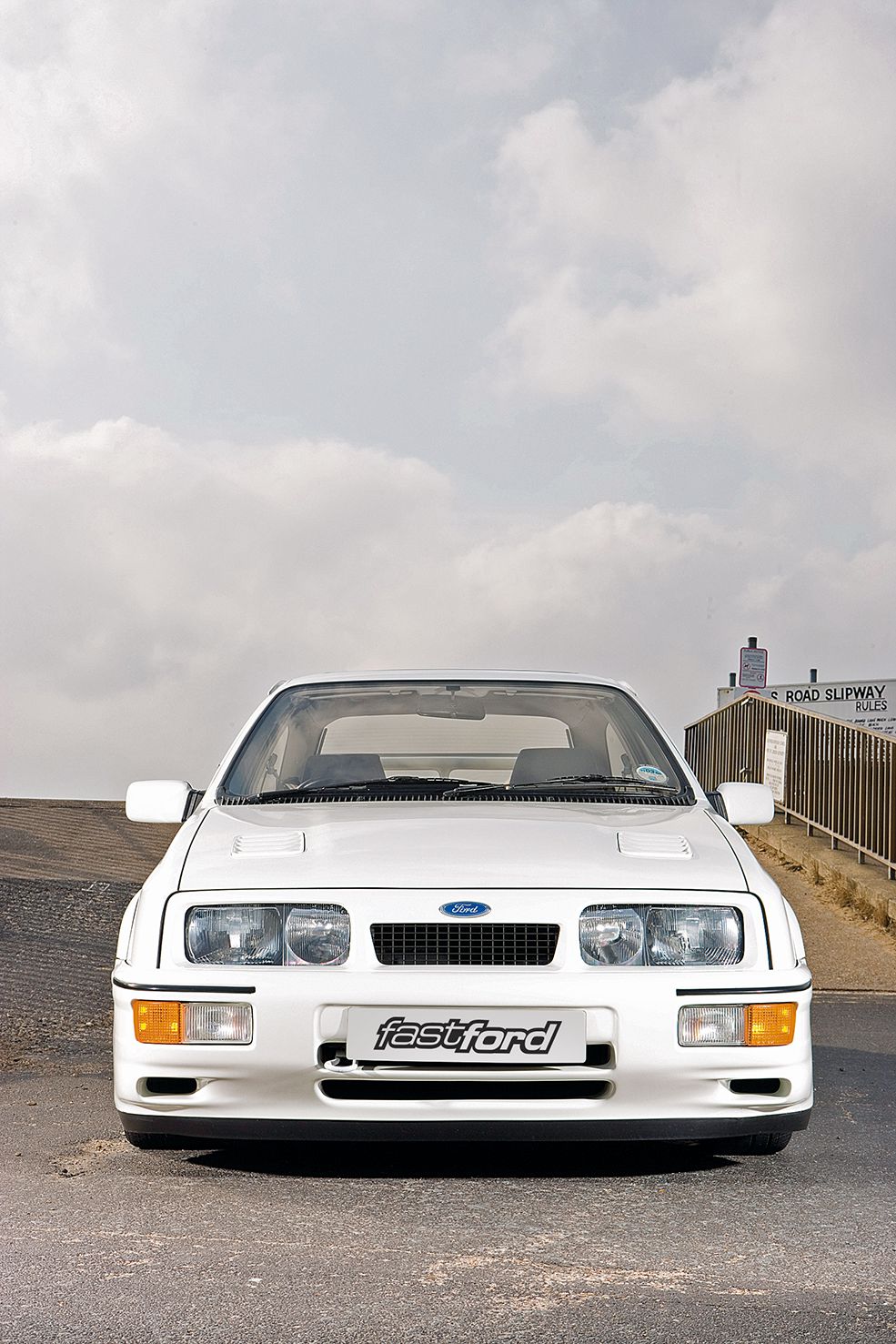
Ford Sierra RS Cosworth three-door history
September 1982 – Ford Sierra launched in UK to replace outdated Cortina; Sierra sales begin during October 1982. Conventional front-engine/rear-wheel-drive layout but buyers are unimpressed by the aerodynamic styling, offered as three-door or five-door hatchback or estate. No high-performance model.
December 1982 – Sierra XR4i available, featuring 150bhp 2.8-litre Cologne V6 engine, sports styling with double rear spoiler and unusual three-door bodywork with split rear side windows.
March 1985 – Sierra RS Cosworth unveiled at Geneva Motor Show. Assembly of at least ten pre-production cars takes place throughout the year. Motorsport homologation requires 5000 production cars for eligibility in Group A touring car racing.
February 1986 – Sierra RS Cosworth series production begins at Genk, Belgium alongside regular Sierra models. Right-hand-drive production cars begin to leave the factory from April. All use basic Sierra three-door bodyshell instead of XR4i type.
15 July 1986 – Sierra RS Cosworth officially launched in UK, powered by turbocharged 2.0-litre DOHC engine produced by Cosworth Engineering and detuned to 204bhp for road use. Standard features include wind-tunnel-proven bodykit with large rear wing, 15in cross-spoke alloy wheels, tinted glass, sunroof, electric front windows, central locking, Recaro front seats, three-spoke leather steering wheel, 170mph speedometer and turbo boost gauge.
December 1986 – Sierra RS Cosworth production ends, after 5542 are built; 500 of those are transported to Tickford, UK to be converted into RS500 evolution models.
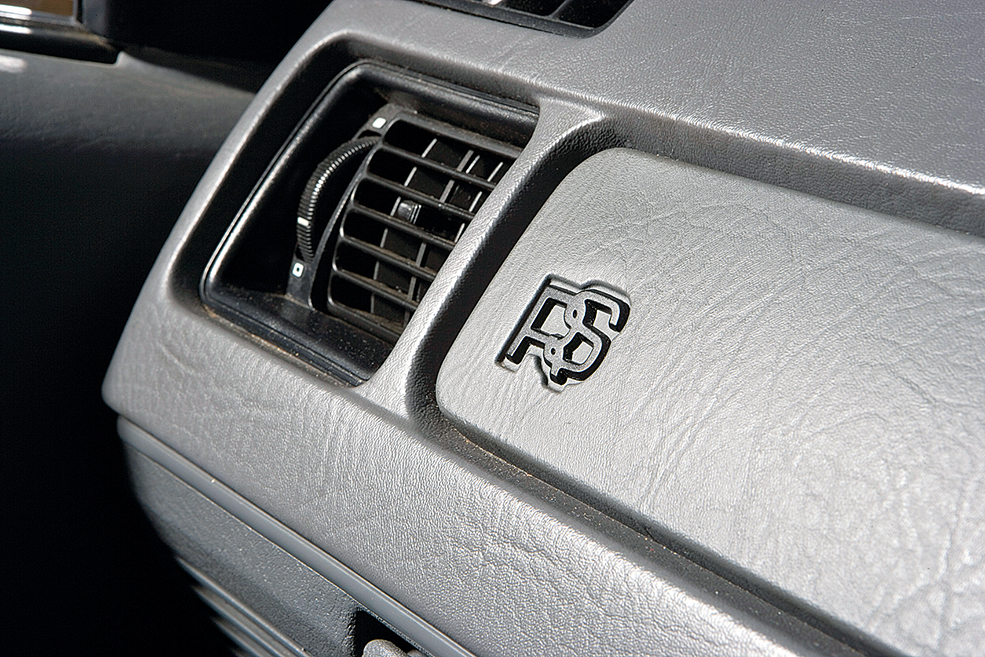
Ford Sierra RS Cosworth buyer’s guide
Identity
Cosworths were crowned king of the 1990s’ car-theft pandemic, and even today it’s vital to ensure any three-door hasn’t been stolen, written off or had its identity changed. A history check is essential, and if it doesn’t add up, steer well clear.
Compare the chassis number on the logbook with the number on the VIN plate riveted to the slam panel and beneath a flap in the carpet beside the driver’s seat; it should read WF0EXXGBBE, followed by a series of two letters and five digits; these last seven characters should match the original engine number. Beware of missing stamps, although several Sierras have been welded over due to rotten inner sills. Any ground-off or home-stamped number is a special code that translates as ‘run away.’
A YBB’s engine number is on a flat section near the offside engine mount, with another hand-stamped by Cosworth on the front of the block next to the water pump, behind the cambelt cover; it will begin with YBB, followed by several numbers.
Other digits on the VIN plate should read N5 for engine, B (right-hand drive) for drive, J for trans, 3 for axle, S2 for trim, and BEF in the type box.
Fakes, ringers and replicas are out there, worth considerably less than genuine Cosworths. A real UK three-door Cosworth road car will have a factory-fitted sunroof, tinted glass (check for an etched registration number), electric front windows, bigger gearbox tunnel (compared with a base-model three-door Sierra shell), straight (horizontal) towing eye, and factory-pressed cutout behind the ABS pump.
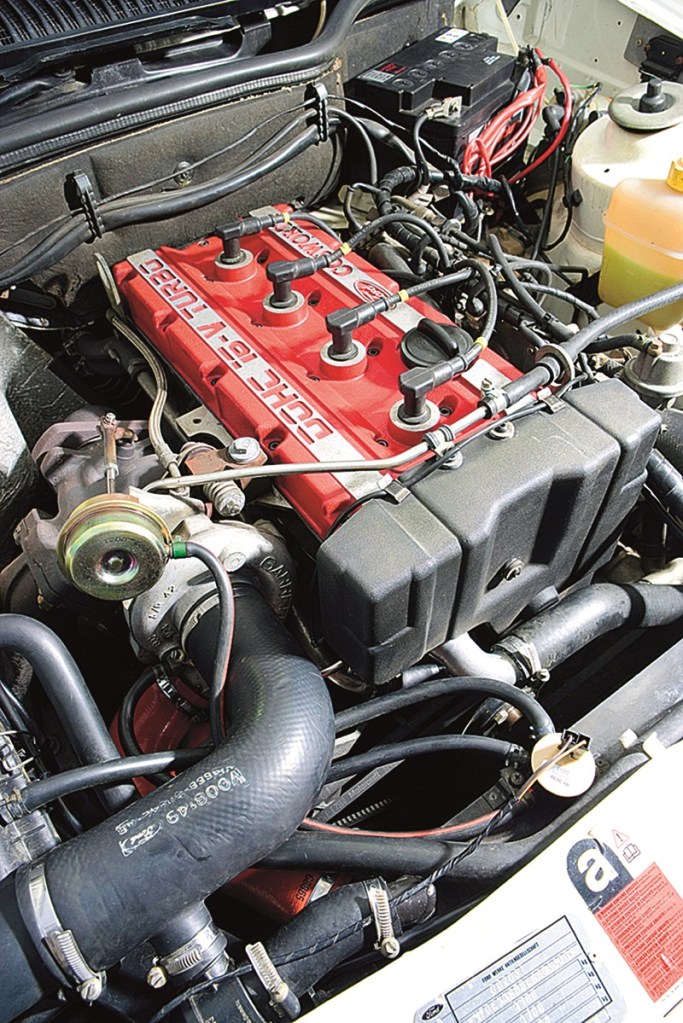
Engine
Cosworth YB powerplant is the stuff of legends. It’s also the creator of nightmares if things go wrong. And they certainly do.
Original three-doors had a YBB engine. Early versions were weakest, but all should have been repaired or rebuilt by now. Listen for piston slap from cold: if it still sounds like a diesel when warm, account for a rebuild. Tired YBs tend to growl and knock, suggesting crankshaft/bearing/bore wear and big bills; all parts are available, but it’s an expensive business.
Head gasket failure can be equally wallet-worrying – especially if it damages the cylinder head. Check for coolant dripping down the cylinder block on the exhaust side, water in the oil, or white clouds exiting the exhaust.
Black smoke is normal for a tuned engine (running rich), but beware of blue plumes of oil smoke: odd puffs at idle are common, but heavy smoke under throttle could be worn piston rings or a blown turbo; check it for play by removing the intake hose and wiggling the compressor wheel.
Misfires are a familiar factor of Cosworth ownership – sometimes serious (such as a blown head gasket) but usually symptomatic of an aged electrical or ignition system. Cossies are renowned for eating spark plugs, leads and coil, and many issues are cured with a wasted spark conversion – but that detracts from originality and value. Boost problems may be due to split or loose hoses, sensors and regulators. Swapping paper gaskets for Cometic type is useful (especially at the inlet manifold), while a replacement engine loom can work wonders.
Check the existing wiring for corroded, chafed or bodged-together cables and connectors, especially in the engine bay beneath the nearside bonnet vent. Make sure the cooling fans cut in when the engine’s hot (the wiring is prone to melting), and inspect the fuel pump, filter and cradle (beneath the boot floor). Test the pump is receiving 13 volts, and if the cradle is caked in rust, anticipate problems.
Old three-door ECUs (Level 1/L1) can also be problematic, generally supplanted by a Sapphire’s L6. A cheeky Stage 1 chip wakes up a Cossie, and shouldn’t detract from the car’s value.
Looking to tune your YB engine? Check out our tuning guide.
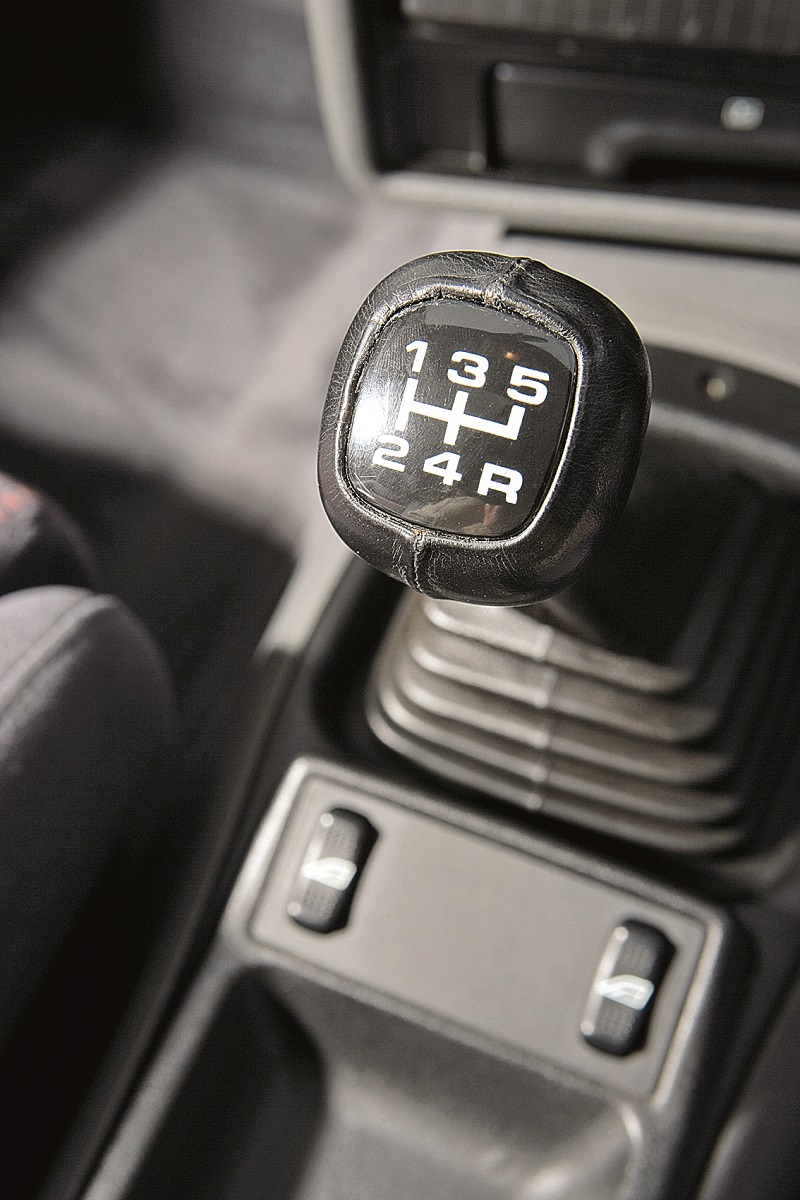
Transmission
Tough and a bit tractor-like, the rear-wheel-drive Cosworth’s BorgWarner T5 gearbox can take loads of power (and abuse). But after 35 years, it’s fair to expect a three-door not to feel fresh.
The gearshift should be heavy but precise. If it resists and crunches when attempting a change (especially from third to second or third to fourth), suspect worn synchromesh rings; the only cure is a gearbox rebuild. There’s no synchro on reverse, so it’s usually noisy unless you select fifth before moving the gearstick.
Take a test drive to listen for nasty noises from the rear end. Rumbling suggests knackered bearings, which will eventually fail and lose drive. Whining will most likely be from the differential – and it’s very common for RWD Cosworths to have a duff LSD, spinning up one rear wheel. Some sounds are less serious – such as vibrations from worn bushes on the differential or propshaft.
Clutch slip is common on Cosworths, especially when modified. To check, floor the throttle in fifth at 3000rpm, and ensure the road speed increases in line with engine revs.
A heavy clutch pedal is probably due to a sticky cable, which runs too close to the exhaust downpipe and becomes stiff – although a high-power machine may well be fitted with a paddle clutch. Hydraulic clutch conversions ease the strain, but devalue an original three-door.
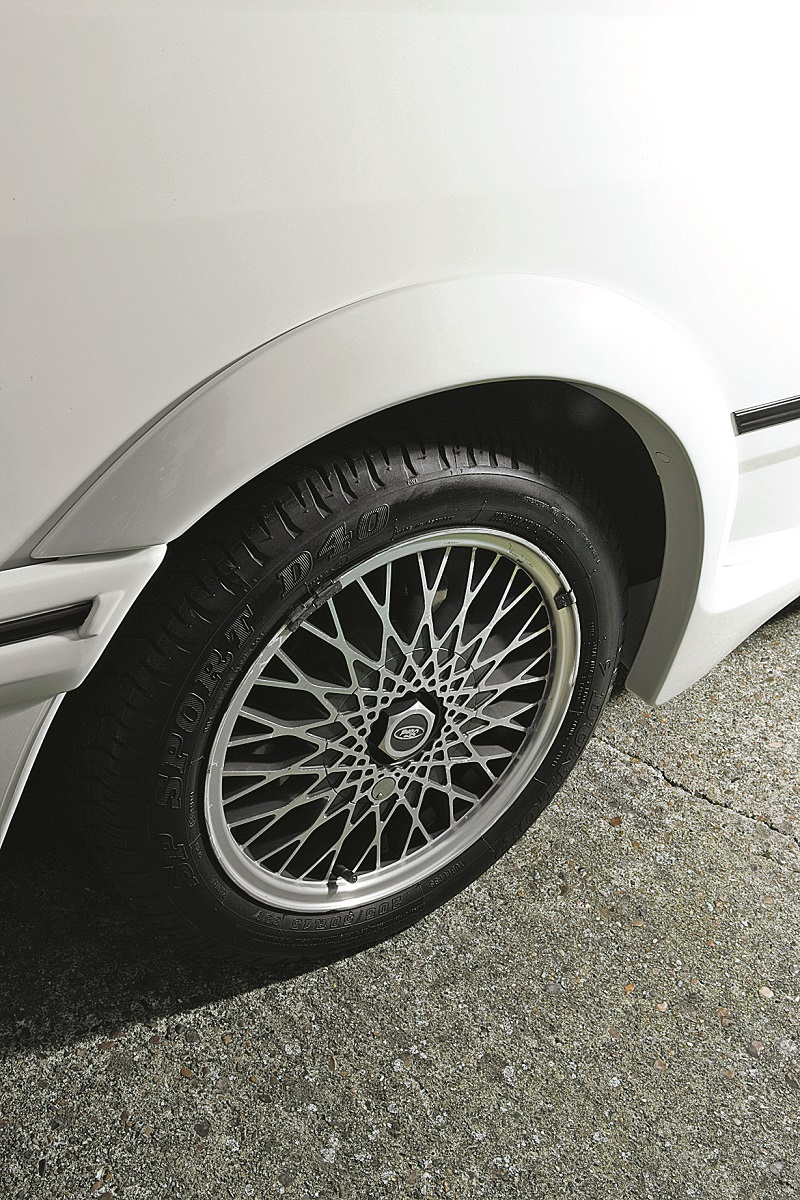
Ford Sierra RS Cosworth Chassis
Don’t expect modern levels of handling or comfort, but any three-door should still feel lively and responsive.
Most have had their suspension upgraded over the years, but many are tired by now. Worn bushes are the chief culprit. Wandering from the front is generally caused by sloppy track control arm bushes (replace with polyurethane), while vagueness at the back is most likely due to the trailing arm bushes. Sloppiness in the steering column bushes (cheap and simple to replace) or rack may also to be to blame for nervous handling; jack up the front wheels to check for play, listen for a noisy PAS pump and look for leaks.
Soggy springs and dampers lead to boat-like body roll; a hard and crashy ride could come from mismatched components (or coilovers too hard for the road), while broken coil springs cause clonking and vibrations – also symptoms of knackered engine mounts or wheel bearings.
Three-doors had four-pot front brake callipers as standard, but they’re prone to seizing against the 283mm ventilated discs; the symptoms are heavy juddering or pulling to one side. Vibrations felt through the brake pedal and steering wheel are most likely due to warped/contaminated front discs and/or pads – Cossies consume them pretty regularly – but could also come from broken suspension components.
Rear discs on a three-door weren’t ventilated (unlike the Cosworth 4×4), and tend to stick on the handbrake mechanism; jack up the rear and spin the wheels to check, and examine the brake lines for leaks and corrosion.
ABS was standard – and excellent for 1986 – but can be troublesome today. Beware if it feels like there’s no servo assistance (a heavy pedal) or the ABS warning lamp on the dashboard stays on after start-up. The cause could be dirty or broken wheel sensors, pump failure, broken wiring, fluid level sensors or blown fuses. Diagnostics is expensive, and most parts are pricey.
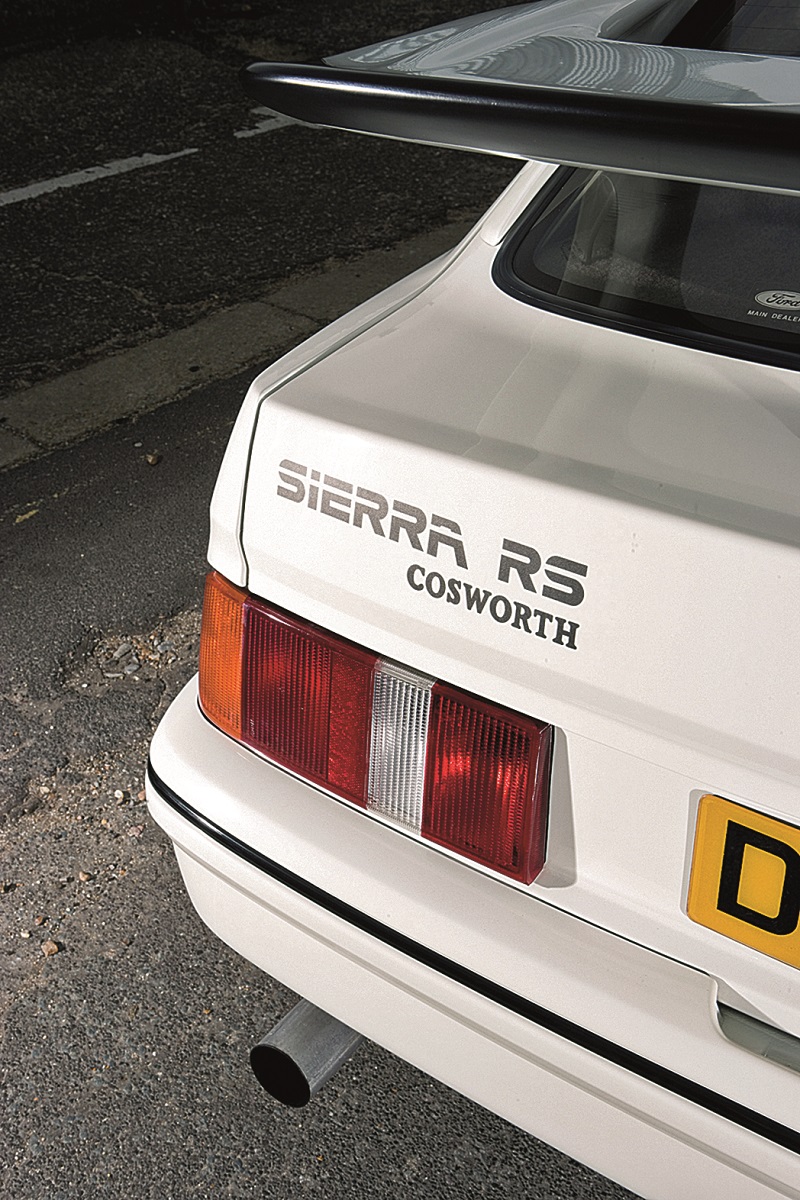
Exterior
Rust is a serious Sierra problem, but by now most three-door Cossies have been restored or in need of very little work. But don’t take it for granted; even a low-mileage or renovated car requires a thorough inspection.
Work your way up from the bottom, checking the floorpan and chassis rails (especially the rear box sections near the spring seats), inner and outer sills, front crossmember and boot floor, particularly around the bumper mounts.
Examine the doors, front wings and tailgate, along with the boot aperture (beneath the rubber seals) and A-pillars, plus the inner and outer wheelarches (where muck gathers behind the plastic extensions and inner liners).
The Sierra’s engine bay is prone to corrosion and stress fractures. Look at the bulkhead, battery tray and inner wings, paying close attention to the suspension turrets, which are known to fold inwards and collapse; another warning sign is excessive negative camber on the front wheels.
Check the headlamps for yellowed lenses, make sure the fog lamps and indicators aren’t cracked, and ensure the grille doesn’t have snapped lugs. Cosworth bumpers can sag, and are becoming increasingly expensive. Likewise, the iconic rear wing, which is prone to snapping on its mounts. It’s common to find loose trim after being removed for restoration, and even simple stuff can be crazy money; look up the cost of side rubbing strips as an example.
If the Sierra is still on its original cross-spoke alloys, check the lacquered diamond-cut finish isn’t flaking, and ensure the centre caps still have their locks.
Accident damage may also be evident (huge numbers of Cossies were crashed), so inspect the hidden areas beneath the boot mat and behind trim. Collectors want to see original/uncut panels (with date stamps on the front wing rails), factory seam sealer and paintwork; all three colours are equal in value.
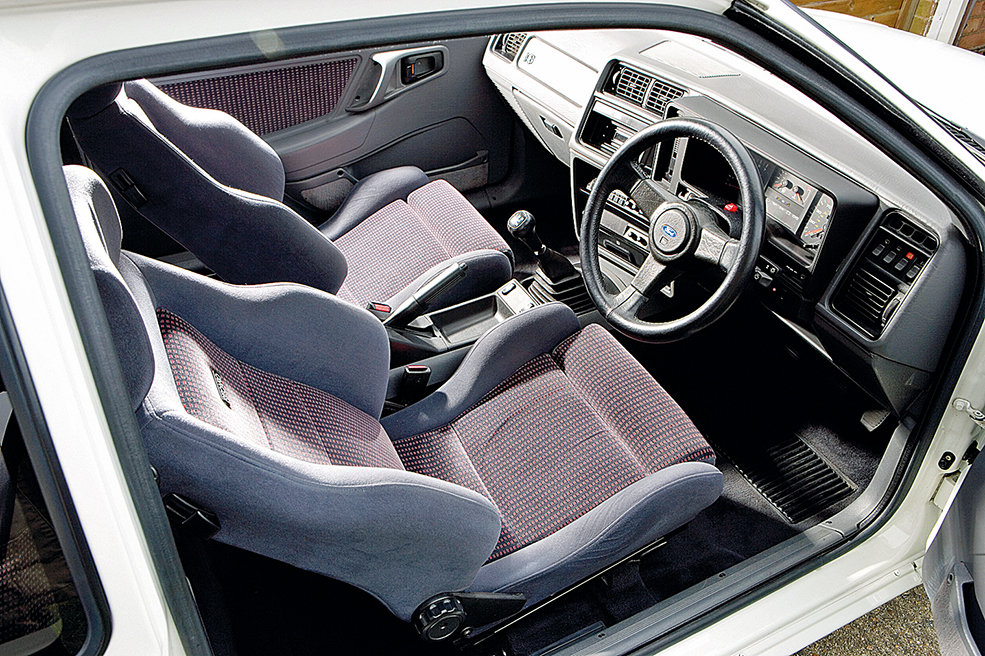
Interior
A mint interior adds thousands to a three-door’s price – and a ropey cabin subtracts as much.
Dashboards are renowned for warping and splitting, and good replacements cost more than £1000. Repairs are possible, although most don’t tend to last long. Some cars have been fitted with uncracked Sapphire dashboards (which lack the speaker grille in the top of the genuine three-door dash), with appropriate reduction in value.
Sierra door cards are similarly rare and pricey, suffering from the vinyl wrinkling up and peeling off, or being hacked to house speakers.
Factory-fitted Recaro front seats are becoming hard to find in excellent condition, so – yes, you guessed it – they’re stupidly expensive. Check for tatty bolsters, sagging cloth, and sloppy reclining mechanisms. Make sure the driver’s side hasn’t been swapped for a passenger seat, which has the recliner knob next to the centre console instead of the proper position beside the door.
Sierra headlinings are prone to sagging (and can be repaired relatively cheaply), as are rear parcel shelves (which cost a bomb); a Cosworth should have a single-piece shelf with a plastic storage box (designed for a non-standard first aid kit).
Don’t be surprised to find sticky electric windows or central locking motors, a non-working heater blower, or random bulbs alight on the dashboard-mounted graphic information display; most parts are cheap enough to fix.
Use the cabin to judge the rest of the car. Cosworth trim is relatively hardy, so if you see a supposedly-low-mileage Sierra with tatty steering wheel and worn pedal rubbers, suspect it’s been around the clock.
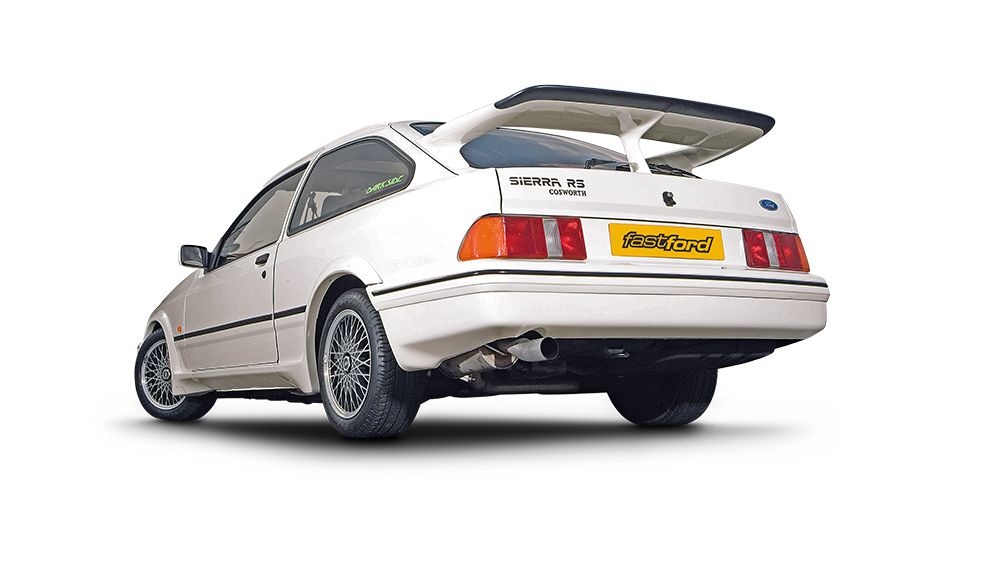
Ford Sierra RS Cosworth images
Tech Spec: Ford Sierra RS Cosworth three-door
Engine:
1993cc four-cylinder, 16V, DOHC YBB with cast-iron ‘205’ block and alloy cylinder head, 8.0:1 compression ratio, toothed belt drive, Weber-Marelli multi-point fuel injection and electronic management system, Garrett T03 turbocharger with intercooler
Transmission:
Rear-wheel drive with Borg Warner T5 five-speed manual gearbox, viscous-coupling limited-slip differential, 204mm clutch. Final drive ratio: 3.65:1
Suspension:
Front: MacPherson struts, Fichtel & Sachs gas-filled dampers, coil springs, lower track control arms, 28mm anti-roll bar; rear: semi-trailing arms, coil springs, Fichtel & Sachs gas-filled dampers, 14mm anti-roll bar
Brakes:
Front: 283mm ventilated discs and four-piston callipers; rear: 273mm solid discs and floating callipers; Teves ABS
Wheels & Tyres:
7x15in multi-spoke RS alloys and Dunlop D40 205/50VR15 tyres
Exterior:
Three-door Sierra hatchback body with unique polycarbonate bodykit comprising deep front bumper, side skirts, wheelarch extensions and rear wing, rubber front lower splitter, front fog lamps, mesh grille, bonnet vents, colour-coded electric heated door mirrors, tinted glass, electric front windows, central locking, tilting/sliding glass sunroof (all UK road cars). Colours: Diamond White, Black or Moonstone Blue
Interior:
Recaro front seats with grey Roma cloth trim, leather-rimmed three-spoke steering wheel, leather-covered gearknob, boost gauge within instrument binnacle

